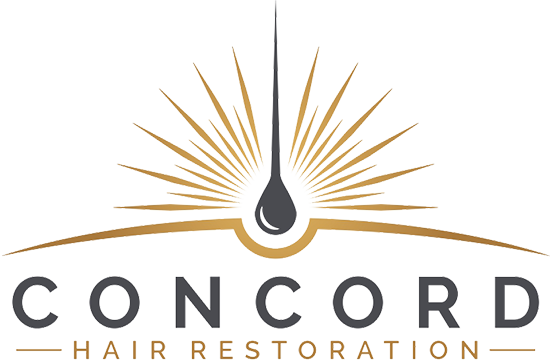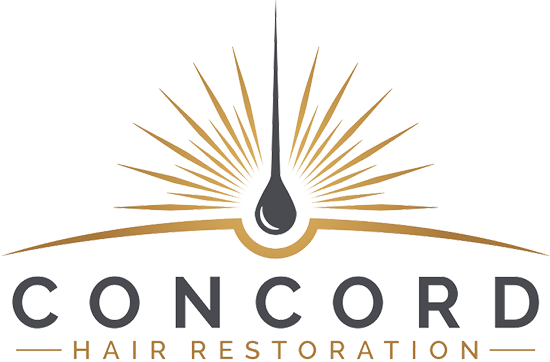Hairline lowering and hair transplants are two different procedures used to address different hair loss concerns.
Forehead Reduction or Hair Transplant: Which is the Right Option for You?
Are you self-conscious about your forehead and feel like it’s too large for your liking? Perhaps you’ve been considering making a change, but you’re not sure whether forehead reduction or hair transplant is the right option for you. Well, you’re not alone. Many people struggle with the decision of which procedure would best suit their needs.
In this article, we will explore the pros and cons of both forehead reduction and hair transplant procedures, helping you make an informed decision. We will cover the process, recovery time, and expected results of each procedure, allowing you to weigh the benefits and drawbacks.
Whether you’re looking to reduce the size of your forehead or restore a receding hairline, this article will provide you with the information you need to make the right choice. No more feeling self-conscious or hiding under hats – it’s time to regain your confidence and feel comfortable in your own skin.
So, without further ado, let’s dive into the world of forehead reduction and hair transplant, and discover which option is the best fit for you.
Understanding forehead reduction and hair transplant procedures
Forehead reduction, also known as hairline lowering surgery, is a cosmetic procedure designed to decrease the size of the forehead. This is accomplished by surgically removing a strip of skin from the forehead area, allowing the hairline to be repositioned closer to the eyebrows. The procedure is typically performed under local anesthesia, enabling patients to return home the same day. Ideal candidates for forehead reduction are those with a naturally high hairline or individuals who feel their forehead appears disproportionately large compared to their facial features.
On the other hand, a hair transplant is a surgical procedure that involves transferring hair follicles from a donor site, often the back of the head, to areas experiencing thinning or balding. This method aims to restore a fuller hairline or enhance hair density. Various techniques exist for hair transplants, including Follicular Unit Transplantation (FUT) and Follicular Unit Extraction (FUE). Both methods have their unique advantages, but they generally require a recovery period during which patients must follow specific protocols to ensure successful hair growth.
Understanding these two procedures is crucial for anyone contemplating a change in their forehead or hairline. Each option serves different aesthetic goals and involves varying levels of invasiveness and recovery times. By grasping the core principles of forehead reduction and hair transplants, you can better determine which procedure aligns with your personal desires and lifestyle.
Factors to consider when deciding between forehead reduction and hair transplant
When contemplating forehead reduction or a hair transplant, several factors come into play that can influence your decision. Firstly, consider your primary concern: is it the size of your forehead or the density of your hair? If your main issue lies in the height of your forehead, a forehead reduction might be the most suitable choice. Conversely, if hair thinning is your primary concern, a hair transplant could be more beneficial.
Another vital consideration is your overall health and medical history. Both procedures carry inherent risks and may not be appropriate for individuals with certain medical conditions. For instance, those with a history of blood clotting disorders or those who are on blood-thinning medications may face heightened risks during surgical procedures. Consulting with a qualified medical professional will help you assess whether you are a suitable candidate for either option.
Lastly, think about your lifestyle and the time you can commit to recovery. A forehead reduction typically requires a shorter recovery period compared to a hair transplant. If you have a busy schedule or cannot afford prolonged downtime, this may be a significant factor in your decision. Weighing these considerations against your aesthetic goals will guide you in making a well-informed choice.
Benefits and drawbacks of forehead reduction
The benefits of forehead reduction are numerous, making it an appealing option for many individuals. One significant advantage is the immediate improvement in facial proportions. Many patients report feeling more confident and satisfied with their appearance after undergoing the procedure. Additionally, the results of a forehead reduction are permanent, meaning once the surgery is completed, you will not have to worry about maintaining or repeating the procedure.
However, there are drawbacks to consider as well. The procedure does involve some degree of surgical risk, including infection, scarring, and complications related to anesthesia. While surgeons strive to minimize scarring, some patients may experience noticeable marks along the hairline. Furthermore, if not performed by a skilled surgeon, the results may not be as aesthetically pleasing, leading to dissatisfaction.
Another factor to keep in mind is the recovery process. Although the downtime is generally shorter than that of a hair transplant, patients can still expect some swelling, bruising, and discomfort in the initial days following surgery. Understanding both the benefits and drawbacks will help you make a more informed decision about whether a forehead reduction aligns with your personal aesthetic goals.
Benefits and drawbacks of hair transplant
Hair transplants offer numerous benefits that make them an attractive option for anyone looking to restore their hairline or improve overall hair density. One of the most significant advantages is the natural-looking results achieved through advanced techniques like FUE. Patients often find that the transplanted hair blends seamlessly with their existing hair, providing a fuller and more youthful appearance. Additionally, the transplanted hair is typically permanent, which means patients can enjoy their new look without the need for ongoing treatments.
However, hair transplants are not without their drawbacks. The initial cost of the procedure can be substantial, and many insurance plans do not cover it as it is considered cosmetic. Moreover, the recovery process can be more prolonged compared to forehead reduction. Patients may experience swelling, discomfort, and the possibility of losing some transplanted hair in the weeks following the procedure, which can be disheartening.
Another critical factor to consider is the skill of the surgeon performing the procedure. A poorly executed hair transplant can lead to unnatural-looking results or complications, emphasizing the importance of thorough research when selecting a practitioner. Balancing these benefits and drawbacks will help you determine if a hair transplant is the right choice for your specific needs.
Consultation and evaluation process for forehead reduction and hair transplant
Before undergoing either a forehead reduction or a hair transplant, a comprehensive consultation and evaluation process is essential. During this initial meeting, the surgeon will assess your goals, medical history, and current health status. They will inquire about your specific concerns and expectations, which helps in creating a tailored treatment plan that meets your needs.
For forehead reduction, the surgeon will examine your facial proportions and hairline to determine the amount of tissue that can be safely removed. They may also discuss potential scarring and how it will be managed during the procedure. Similarly, for a hair transplant, the surgeon will evaluate the donor site for quality and density of hair follicles, as well as the areas needing treatment. This evaluation is crucial in determining the best approach for achieving the desired results.
Once the evaluation is complete, the surgeon will provide you with detailed information regarding the procedure, including the techniques that will be used, potential risks, and post-operative care. This transparent communication allows patients to make informed decisions and set realistic expectations for their results.
Recovery and aftercare for forehead reduction and hair transplant
Recovery and aftercare play a crucial role in the success of both forehead reduction and hair transplant procedures. After a forehead reduction, patients will typically experience some swelling and bruising, which can last a few days. It is essential to follow the surgeon’s post-operative instructions, which may include avoiding strenuous activities, keeping the head elevated, and using prescribed medications to manage discomfort. Patients are usually able to return to work and normal activities within a week, although complete healing may take several weeks.
In contrast, the recovery period for a hair transplant can be more involved. Initially, patients may experience swelling, redness, and discomfort in the donor and recipient areas. Following the procedure, it is crucial to avoid any activities that could dislodge the newly transplanted hair follicles. Patients are often advised to refrain from strenuous exercise for a few weeks and to follow a gentle hair-washing routine to protect the grafts. The full results of a hair transplant may take several months to become visible, as the hair follicles enter a growth cycle.
Both procedures require diligent aftercare to ensure optimal healing and results. Regular follow-up appointments with the surgeon are essential for monitoring progress and addressing any concerns that may arise. By adhering to post-operative instructions, patients can enhance their recovery experience and achieve the best possible outcomes.
Cost comparison between forehead reduction and hair transplant
Understanding the financial implications of forehead reduction and hair transplant procedures is essential for anyone considering these options. Generally, forehead reduction tends to be less expensive than hair transplants. The cost of forehead reduction can vary based on factors such as the surgeon’s experience, geographic location, and the complexity of the procedure. On average, patients can expect to pay anywhere from $3,000 to $7,000 for forehead reduction surgery.
In comparison, hair transplants often come with a higher price tag. The cost can range significantly depending on the method used, the extent of the bald area, and the number of grafts required. Patients may find themselves spending anywhere from $4,000 to $15,000, with some clinics charging per graft. It’s crucial to keep in mind that hair transplants may require multiple sessions to achieve desired results, further increasing the overall cost.
While insurance typically does not cover cosmetic procedures, some clinics may offer financing options to help manage the expense. Weighing the costs against the potential benefits of each procedure will help you make a financially informed decision that aligns with your goals and budget.
Success stories and patient testimonials
Success stories and patient testimonials can provide invaluable insights into the experiences of individuals who have undergone forehead reduction or hair transplant procedures. Many patients report transformative outcomes, noting significant boosts in confidence and self-esteem following their surgeries. For those who have chosen forehead reduction, numerous testimonials highlight the immediate improvement in facial proportions and overall appearance. Patients often express gratitude for the newfound freedom to style their hair in ways they previously avoided.
Similarly, hair transplant patients frequently share their satisfaction with the natural results achieved through the procedure. Many individuals who struggled with thinning hair or receding hairlines have reported successful outcomes that have restored their youthful appearance. Testimonials often emphasize the importance of selecting a skilled surgeon, as this greatly influences the quality of results.
Sharing these personal stories can be a source of inspiration for those contemplating either procedure. Hearing about the positive transformations experienced by others can provide reassurance and help potential patients envision their own journey toward enhanced confidence and self-image.
Choosing the right surgeon for forehead reduction or hair transplant
Selecting the right surgeon is one of the most critical steps in the journey toward either forehead reduction or a hair transplant. A qualified and experienced surgeon will possess the necessary skills to achieve optimal results while minimizing the risk of complications. Start by researching board-certified plastic surgeons or dermatologists specializing in cosmetic procedures. Look for credentials, experience, and patient reviews to gauge their expertise.
During the consultation process, take the time to ask questions about the surgeon’s approach to the procedure, their experience with similar cases, and their overall philosophy regarding patient care. A good surgeon will be transparent about potential risks, expected outcomes, and any concerns you may have. Building rapport and trust with your surgeon is vital, as it can significantly impact your overall experience and satisfaction with the results.
Additionally, consider the surgical facility’s accreditation and reviews. A reputable facility should adhere to high standards of safety and hygiene. By being diligent in your research and taking the time to choose the right surgeon, you can enhance your chances of achieving the desired outcomes and ensure a positive experience throughout your cosmetic journey.
Hairline Lowering:
Hairline lowering, also known as forehead reduction or scalp advancement, is a surgical procedure designed to lower the hairline by moving the forehead forward. This procedure is typically recommended for individuals with a high hairline or a large forehead. During the procedure, an incision is made along the hairline, and the forehead skin is advanced to bring the hairline down. The excess forehead skin is then removed, and the incision is closed.
Advantages of Hairline Lowering:
- Provides a permanent solution for a high hairline.
- Can improve facial proportions and balance.
- Does not require hair follicles from other areas of the scalp.
- Can be combined with other procedures like brow lift or forehead contouring.
Disadvantages of Hairline Lowering:
- Involves a surgical procedure with associated risks such as infection, scarring, and anesthesia complications.
- Limited to individuals with a specific hairline concern.
- May not be suitable for individuals with a limited amount of forehead skin to advance.
Hair Transplant:
Hair transplant is a procedure that involves the transplantation of hair follicles from a donor area (typically the back or sides of the scalp) to the recipient area (areas with thinning or balding hair). The most common technique used is follicular unit transplantation (FUT) or follicular unit extraction (FUE), where hair follicles are harvested from the donor area and transplanted into tiny incisions made in the recipient area.
Advantages of Hair Transplant:
- Effective for treating pattern baldness or thinning hair.
- Can provide natural-looking results.
- Minimally invasive procedure with a relatively quick recovery time.
- Can be customized to achieve desired hairline shape and density.
Disadvantages of Hair Transplant:
- Requires sufficient donor hair follicles for transplantation.
- May require multiple sessions to achieve desired results.
- The transplanted hair may require some time to grow and blend naturally with the existing hair.
- Does not address other concerns such as a high hairline or forehead size.
In summary, hairline lowering is specifically designed to address a high hairline or large forehead, while hair transplants are more suitable for treating pattern baldness or thinning hair. The choice between these procedures depends on the individual’s hair loss concerns and desired outcomes, and it is best to consult with a qualified hair restoration specialist to determine the most appropriate approach.

Are you tired of dealing with hair loss or an unsatisfactory hairline?
Look no further than Concord Hair Restoration! Our team of experienced hair restoration specialists is dedicated to helping you regain your confidence and achieve the hairline you’ve always wanted.
Take the first step towards a fuller, more vibrant head of hair. Contact Concord Hair Restoration today to schedule your consultation. Whether you’re interested in hairline lowering, hair transplants, or other innovative solutions, our experts will guide you through the process, answering all your questions and providing personalized treatment options.
Don’t let hair loss hold you back any longer. Call Concord Hair Restoration now or visit our website to book your appointment. Experience the difference our expertise and passion for hair restoration can make in your life. It’s time to embrace a new chapter of confidence and self-assurance. Act now and unlock the beauty of your hair with Concord Hair Restoration!

